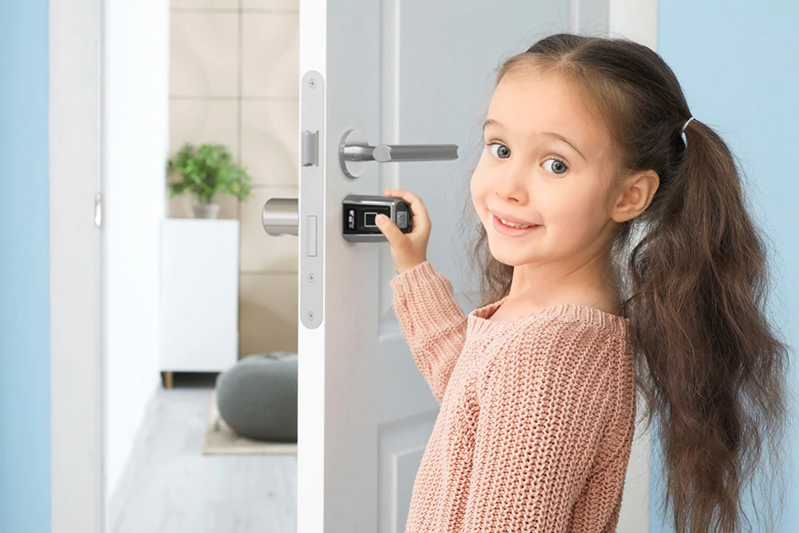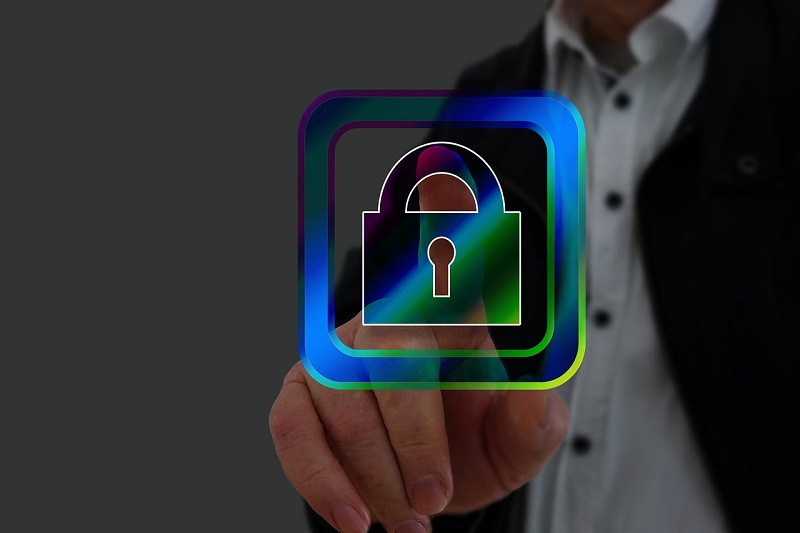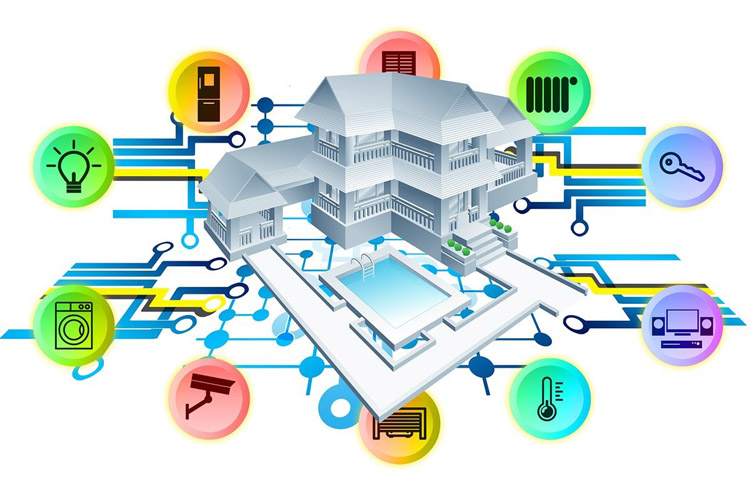Knowing how smart door locks are powered is a top priority if you are in the market for a smart door lock. It gets even more confusing when you have to determine if the smart door lock is powered by replaceable AAA or AA batteries, rechargeable battery packs, or an external power source such as a USB charging brick.
Thankfully every smart door lock has its manufacturer-specified powering mode. This information is often found in the device’s specs information. This guide covers everything there is to know about how smart door locks are powered.
How Do Smart Door Locks Get Power?
Most smart locks in the market rely on removable batteries to power their functions. The batteries included in the smart lock power the LED lights, built-in video cameras, motors that control the lock and unlock mechanisms, and wireless chips.
Most Of the batteries used to power smart door locks are dry batteries, although some use rechargeable lithium batteries.
Types of Smart Door Locks Power Sources
1. Alkaline (AA or AAA) Batteries
Alkaline batteries, also known as dry cell batteries, have a zinc anode and a manganese dioxide cathode. These batteries are often the cheapest way to power smart door locks, with their only downside being that they are non-rechargeable, and you will need to replace them when they run dry.
Depending on the design used by the manufacturer, the smart door lock may require either AA or AAA-size alkaline batteries.
2. Lithium Batteries
Lithium batteries are made from carbon and lithium, making them significantly more expensive than alkaline batteries. Most Lithium batteries are rechargeable. However, the process degrades them, and they tend to disintegrate faster.
3. Battery replacement power supply
If you have a power outlet that’s strategically located close to the door, you can run a battery replacement power supply line from the outlet to the smart lock. Very few manufacturers produce smart door locks that can utilize an external power outlet. You can, however, get a battery replacement power supply that slots into your smart lock just like a standard battery, with the added benefit that it’s hooked to an external power outlet.
4. Power Pack
Some smart door lock manufacturers prefer to use rechargeable power packs to power the electronic locks. These are often attached to the interior side of the door, where you can replace low-power packs with a full-powered pack. Unlike Lithium batteries, power packs may at times require 10 hours to charge fully.
Depending on the smart lock’s design, you may use a USB-C charging cable to recharge the power pack without having to disable the unit. Power packs tend to have higher charge retention than lithium batteries, but they are quite noticeable.
How Long Do Smart Lock Batteries Last?
Depending on the manufacturer and usage, smart lock batteries can last between one month and up to 2 years. The rule of thumb here is that the more the functionality, the more power the unit consumes with each lock/unlock command. Most smart locks that use Z-wave and Bluetooth functionality are low-powered and can even go for up to 2 years on the same lithium battery. Alkaline batteries can last for upto three months, but their shorter battery life and non-recharge ability make them less recommendable.
How Do Smart Locks Consume Battery Power?
A smart door lock battery power is required to operate the LED lights, lock motors, and wireless protocols. These components are designed to use minimal current, but you may notice that the smart lock battery power is getting consumed too fast every time. Here are some reasons for this:
1. Deadbolt friction
When a smart door lock is installed incorrectly, the strike plate in the doorframe often ends up improperly aligned with a deadbolt. This creates friction when the motor moves the deadbolt. With each locking and unlocking sequence, the extra resistance causes the motor to work harder and drain more battery power.
2. Weak wireless signal
Smart door locks equipped with Wi-Fi chips may end up consuming more battery life when the wifi signal from your router gets poor. Wireless chips are designed to increase power consumption in an attempt to maintain a consistent connection with your Wi-Fi access point. This ends up drastically reducing the battery life.
A weak wireless signal is often a result of overcrowding wi-fi connections with numerous integrated devices. Having the router placed too far away from the smart lock will lead to unstable connectivity, interfering with the battery-saving sleep mode and increasing power consumption.
Wrap Up
Smart locks guarantee security and seamless entry and exit without worrying about where you left your keys. Like any other electronic device, a smart door lock will require power to operate, with most of them relying on lithium or alkaline batteries.




